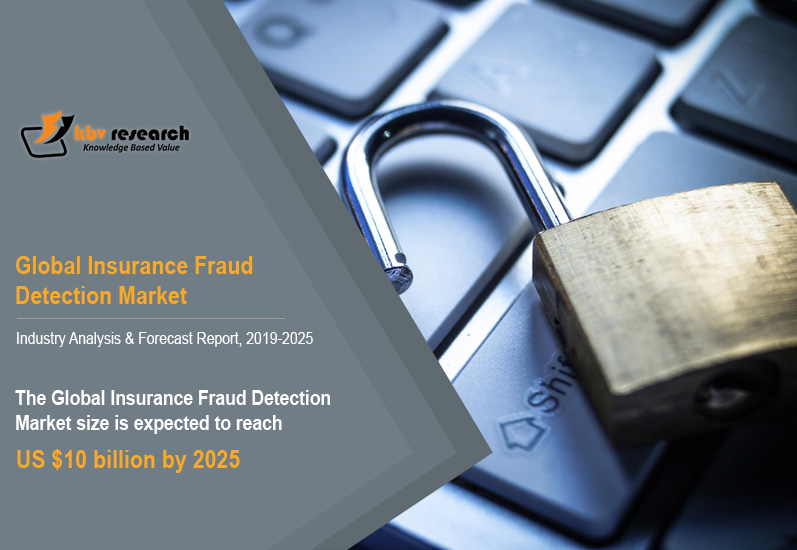
The problem for cyber security in the life insurance sector is very severe, as is the case in other sectors such as banking, healthcare, etc. The insurance industry has a huge amount of client data and clients have a lot of confidence in the organizations with whom they do business.
The insurance industry is moving to a contemporary paradigm that focuses on risk mitigation and prevention instead of financial loss compensation. This is driving the development of new insurance ecosystems and the latest generation of rivals. However, many insurers stay threatened by legacy infrastructure, siloed applications and absence of understanding on the importance of insurance analytics. This is exacerbated by M&A activities and by raising customer requirements for the use of new technologies. In addition to this, insurers are compelled to innovate in the field of consumer experience in business applications, such as mobile applications to create claims or self-service insurance analytics.
The technology breakthrough in recent years has led to a rise in insurance fraud and, as a result, the sector's landscape is evolving. From Pricing Comparison Websites (aggregators) to Telematics and Usage-Based Insurance, to the Internet of Things, to the growing demand for cyber insurance and recent Peer to Peer insurance, traditional insurers must rapidly adapt to current trends and compete with non-traditional companies with big data processing capacities.
On the other side, insurance companies are suffering from fraud expenses and, as insurance products become more complex and customer communication channels and potential fraudsters are rising. Furthermore, these trends are raising the level of intelligence and automation to combat insurance fraud overwhelms traditional fraud detection and avoidance of organizational structures, procedures, and technological infrastructure.
Big data analytics and artificial intelligence play a significant part in the insurance industry in this digital age. One of the major challenges for insurance companies seems to be detecting fraudulent insurance claims. The success of an individual fraudulent claim relies on the capacity of the fraudster to present it as a real, distinctive incident. Apparently, fraud has common features, which can be determined by exchanging information and analytics.
Insurance companies would all profit from entering forces and exchanging data through fraud pools. This is the only way to monitor, fight and control organized fraud. This would assist insurers to know about the recent fraud schemes and remain ahead of the game. Fraudsters are always searching for a weak place. Access to global fraud-related pools would discourage fraudsters from shuffling between countries and insurers.
Intelligent software can process data rapidly, learn individually, draw intelligent conclusions, and make recommendations. Just like a human, but smarter and more effective. The vast amount of information and the impressive computational capacity implies that these analyzes are carried out at lightning velocity and with excellent precision. For example, Artificial Intelligence can be used for analyzing images while at the same time digging for fraud. There are currently dozens of AI types in development. Insurance carriers may use these technologies to enhance and optimize their risk analysis and fraud identification procedures.
Click Free Insight: https://www.kbvresearch.com/insurance-fraud-detection-market/
Customers are always looking for a trusted and reliable partner to meet their insurance requirements. Insurance Data Analytics helps insurance companies and brokers deliver tailored services to their customers. Companies can utilize intelligent insurance management platforms and other techniques to obtain useful insights from client information and provide customers with precisely what they are looking for.
Fraud and waste are frequently seen and dealt with by insurance companies. Today, thanks to data analysis, there are methods to decrease these attempts at fraud to a significant degree. Insurance companies may use this data intelligence actionable to find out who is likely to be a fraudster even before it occurs.
The significant challenge facing insurance companies is to price their premiums precisely for each policyholder. Often, policyholders may face unfair premium quantities for no error of their own. To be more competitive on the market, insurance companies are coming up with some new strategies using insurance analytics. The prices of premiums can be determined by drawing actionable ideas from data analytics and tracking the behavior of individual policyholders.
With the assistance of data analytics, insurance companies can evaluate the large volumes of data and identify discrepancies in the underwriting phase of the policy. If the claim is made by the client, the insurer can readily detect that the claim is valid or not. Data analytics can be used to monitor digital channels and social media in real-time, and assist traditional insurance companies to transform their digital processes.
To sum up
The insurance fraud detection market is growing exponentially with the rise of analytics and artificial intelligence. Combining supervised and unsupervised machine learning as part of a wider fraud detection strategy for Artificial Intelligence (AI) allows digital companies to rapidly and precisely identify automated and progressively complicated fraud efforts. Among the most common types of new attacks, the adoption of machine learning and other automation techniques to commit fraud is emerging. The most popular legacy approaches to combating online fraud include relying on regulations and predictive models that are no longer efficient in facing the more advanced, nuanced levels of recent efforts at fraud. Online fraud detection requires AI to remain in tune with today's fraud attempts' rapid increase in complexity and sophistication. The global insurance fraud detection market is expected to proliferate at a growth rate of 26.6% over the forecast period.